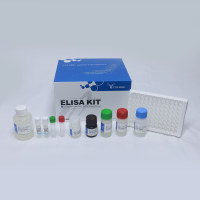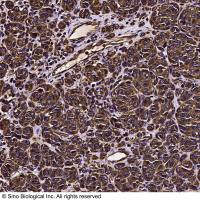Several approaches have been used to identify antibody (Ab)-defined human tumor-associated antigens (TAA) that can be used for passive and/or active specific immunotherapy of malignant diseases. For example, hybridoma technology has been successfully used to identify TAA recognized by mouse monoclonal Abs (for review, see ref. 1 ). The SEREX methodology, i.e., serological analysis of recombinant cDNA expression libraries prepared from malignant cells, has also been successfully used to identify TAA recognized by Abs present in sera from patients with malignant diseases (2 ). A number of novel TAA have been identified with the SEREX methodology, but most of them are intracellular (3 ), and are therefore not likely to be useful targets for Ab-based immunotherapy of malignant diseases. More recently, TAA have been identified by utilizing phage-display Ab libraries, which are a diverse collection of Abs displayed as Fabs (4 ,5 ) or scFvs (6 ) on the surface of filamentous phages (for review, see ref. 7 ). Phage libraries have been constructed using a collection of cloned VH and/or VL fragments that have been assembled in vitro with random complementarity-determining region 3 (CDR3) (synthetic libraries) (6 ). Alternatively, phage libraries have been constructed using lymphocytes from either unimmunized (na�ve libraries) (4 ) or immunized (immune libraries) (5 ,8 ) individuals.






